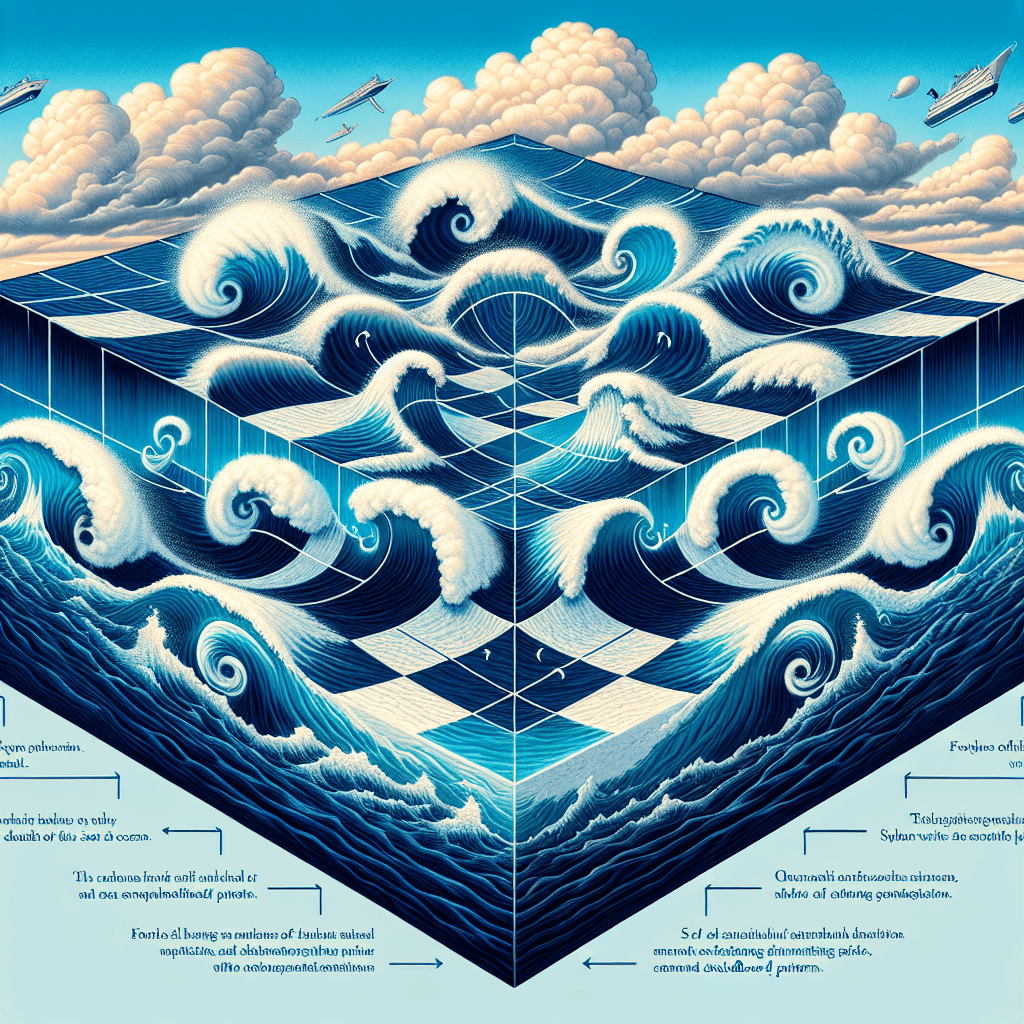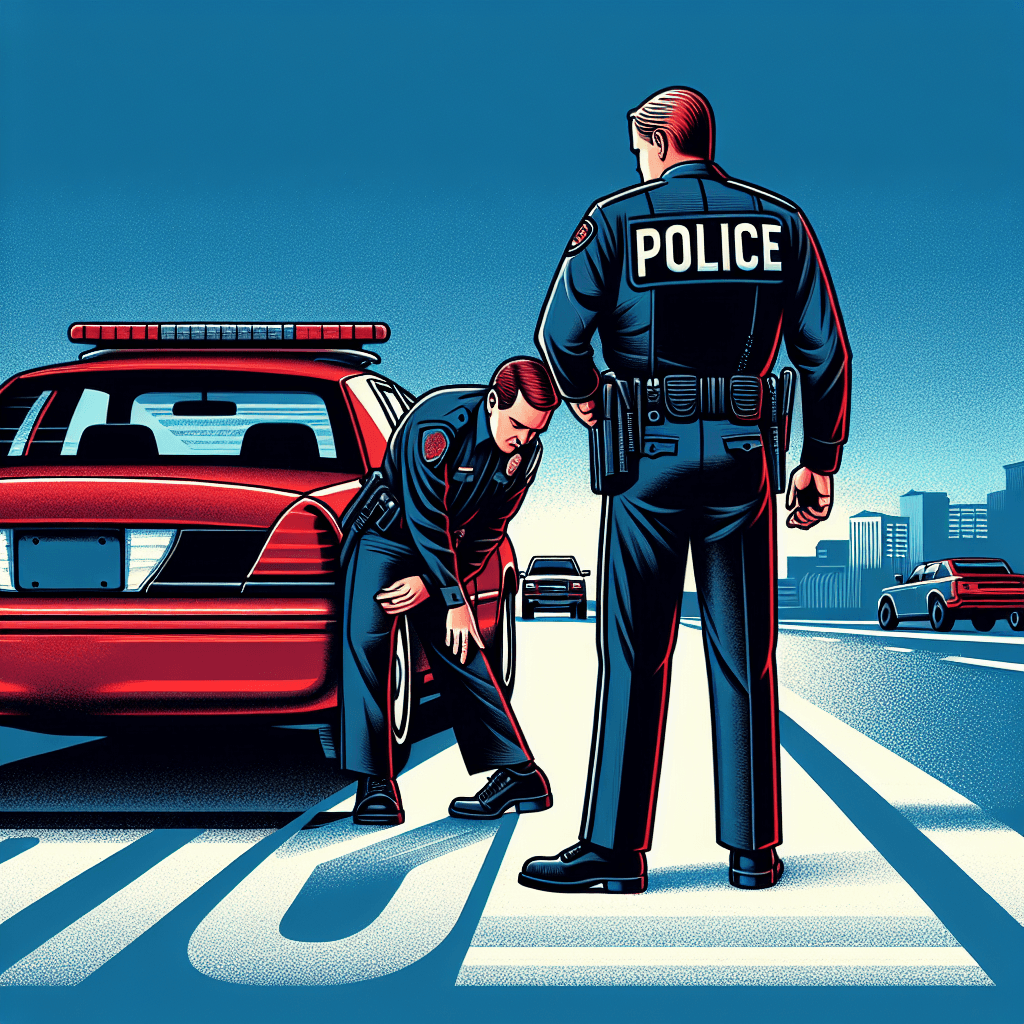Why do ocean waves sometimes form a dangerous checkerboard pattern
Don't be fooled by the mesmerizing beauty of a grid-like pattern on the ocean's surface. This rare phenomenon is a clear sign of powerful, clashing swells creating one of the most treacherous and unpredictable dangers in the sea.


Too Long; Didn't Read
TLDR: That dangerous checkerboard pattern is a cross sea, formed when two wave systems from different directions meet. Their collision creates chaotic, steep, and unpredictable waves that can easily capsize boats.
The Deadly Grid: Why Do Ocean Waves Sometimes Form a Dangerous Checkerboard Pattern?
Imagine standing on a coastline, looking out at the ocean. Instead of the familiar, parallel lines of waves rolling toward the shore, you see a mesmerizing yet unsettling grid. The surface of the water appears to be diced into distinct squares, forming a vast, aquatic checkerboard. While this sight is rare and visually stunning, it’s a clear warning sign of an incredibly dangerous ocean condition known as a "cross sea." This blog post will decode this strange phenomenon, explaining what causes it and why it poses such a significant threat to swimmers and sailors alike.
What is a Cross Sea? The Science Behind the Squares
The checkerboard pattern on the ocean is scientifically known as a "cross sea" or "square sea." It is a relatively rare state that occurs when two separate wave systems, traveling from different directions, collide and interact with each other at an oblique angle.
To understand this, it's important to know that ocean waves are often generated by wind. A consistent wind blowing over a large patch of ocean creates a series of waves called a "swell." This swell can then travel for thousands of miles across the open ocean, long after the storm that created it has dissipated.
A cross sea forms when:
- One swell, generated by the local wind system, is moving in one direction.
- A second, long-distance "groundswell," created by a storm system far away, arrives from a completely different direction.
When these two swells intersect, their wave patterns superimpose on each other. The crests and troughs of the two systems interact, creating the distinctive peaks and valleys that form the square, grid-like pattern on the surface. A famous location where this phenomenon is often photographed is at the tip of Île de Ré in France, where the Atlantic Ocean and the Pertuis d'Antioche sea meet.
The Hidden Dangers of the Checkerboard Pattern
While beautiful to look at from a safe distance, a cross sea is one of the most hazardous conditions you can encounter in the water. The danger lies in the chaotic and unpredictable nature of the intersecting waves.
Unpredictable Forces and Rogue Waves
In a normal sea state, waves move in a predictable, rhythmic direction. A boat or a swimmer can anticipate the motion and brace for it. In a cross sea, this rhythm is gone. You are being hit by forces from two different directions at once, creating a chaotic, washing-machine-like effect that can easily overwhelm a person or capsize a small vessel.
The most significant danger comes from a principle called constructive interference. When the crests (the highest point) of two waves from the different systems meet at the same time, their energies combine. This can instantly create a single, much larger and steeper wave that appears almost out of nowhere. These sudden, rogue-like waves can be more than double the height of the individual waves and are powerful enough to flip boats and pull swimmers under with immense force.
Powerful and Confusing Rip Currents
The chaotic energy of a cross sea can also generate exceptionally strong and unpredictable rip currents. A rip current is a narrow, fast-moving channel of water that flows away from the shore. In a cross sea, these currents can form in unexpected places and change direction rapidly, making it incredibly difficult for even the strongest swimmers to navigate or escape.
How to Spot a Cross Sea and Stay Safe
Recognizing a cross sea is the first and most important step to staying safe.
- The Visual Cue: The most obvious sign is the distinct square or diamond-shaped pattern on the water's surface. If you see this, you are looking at a cross sea.
- Heed Official Warnings: Always pay attention to lifeguard flags on the beach and local maritime weather forecasts. These services are trained to identify dangerous sea states.
- When in Doubt, Don't Go Out: The simplest and most effective rule is this: if you see a checkerboard pattern in the waves, do not enter the water. It is a phenomenon best appreciated from the safety of the shore.
- For Boaters: If you are caught in a cross sea, the situation is perilous. It is often advised to try and steer your vessel to take one of the wave systems head-on, rather than getting hit on the side (the beam), which drastically increases the risk of being rolled over. Navigating these conditions requires extreme skill and caution.
In conclusion, the ocean’s checkerboard pattern is a fascinating intersection of weather systems and physics. It’s a powerful reminder that two distant storms can have a dramatic and dangerous meeting point hundreds of miles away. While the geometric beauty of a cross sea is undeniable, it is a definitive signal from nature that the water is treacherous and should be avoided. Understanding phenomena like this allows us to appreciate the ocean's immense power while respecting the clear warnings it provides.
More Articles

Why do movie punches sound so much crunchier and louder than real ones?
That sickening, bone-crunching punch you hear in the movies is a lie, and the secret ingredient is probably sitting in your refrigerator right now.

What makes a beer bottle suddenly foam over just from a light tap on top?
It’s not magic, it’s a shockwave; discover the explosive physics that turns a gentle tap on your beer bottle into an instant foamy geyser.

Why do police officers touch the back of a car during a traffic stop?
It’s not a random habit; that simple touch is a calculated, old-school tactic designed to leave a crucial and potentially life-saving piece of evidence behind.